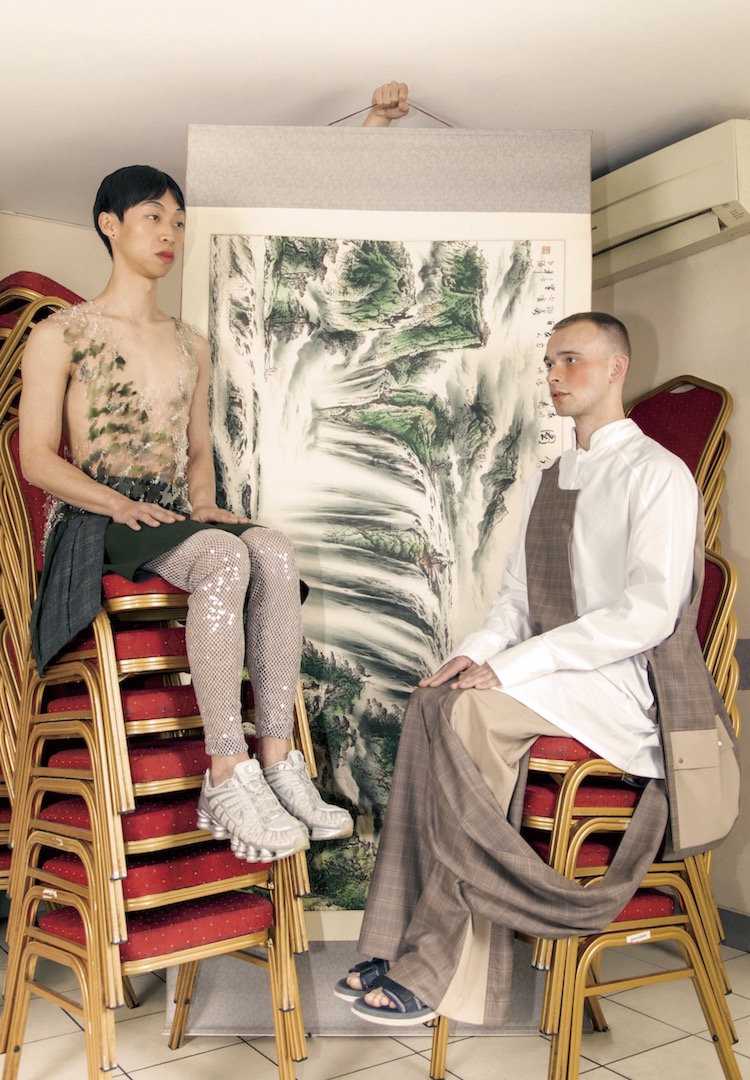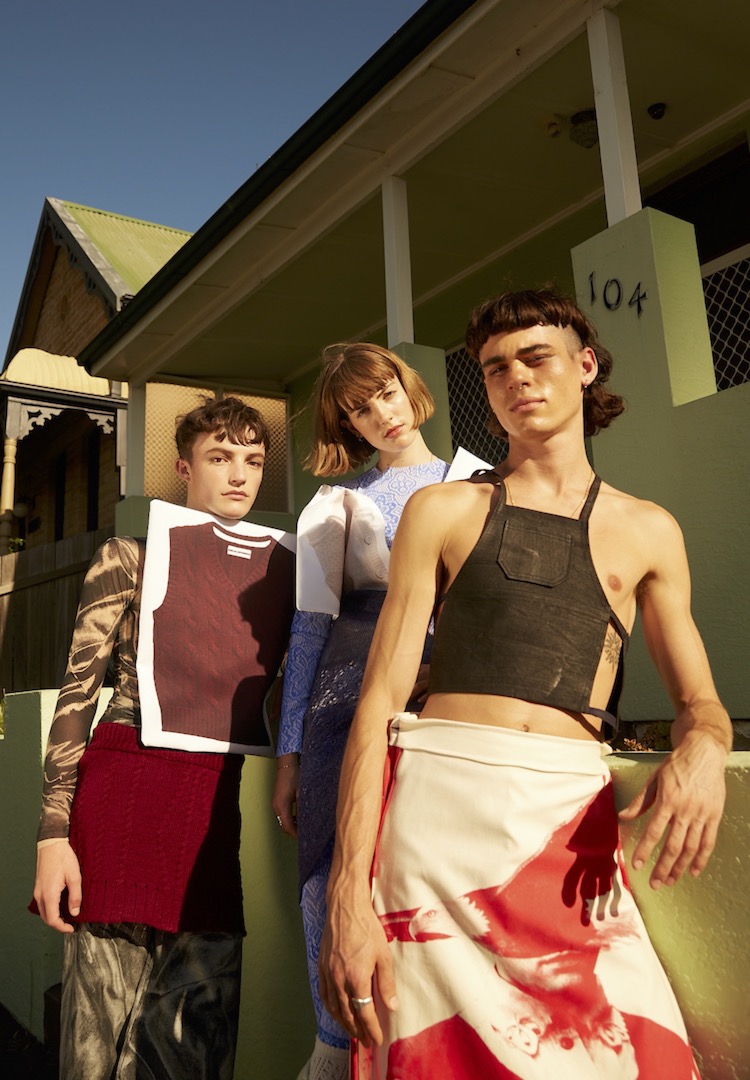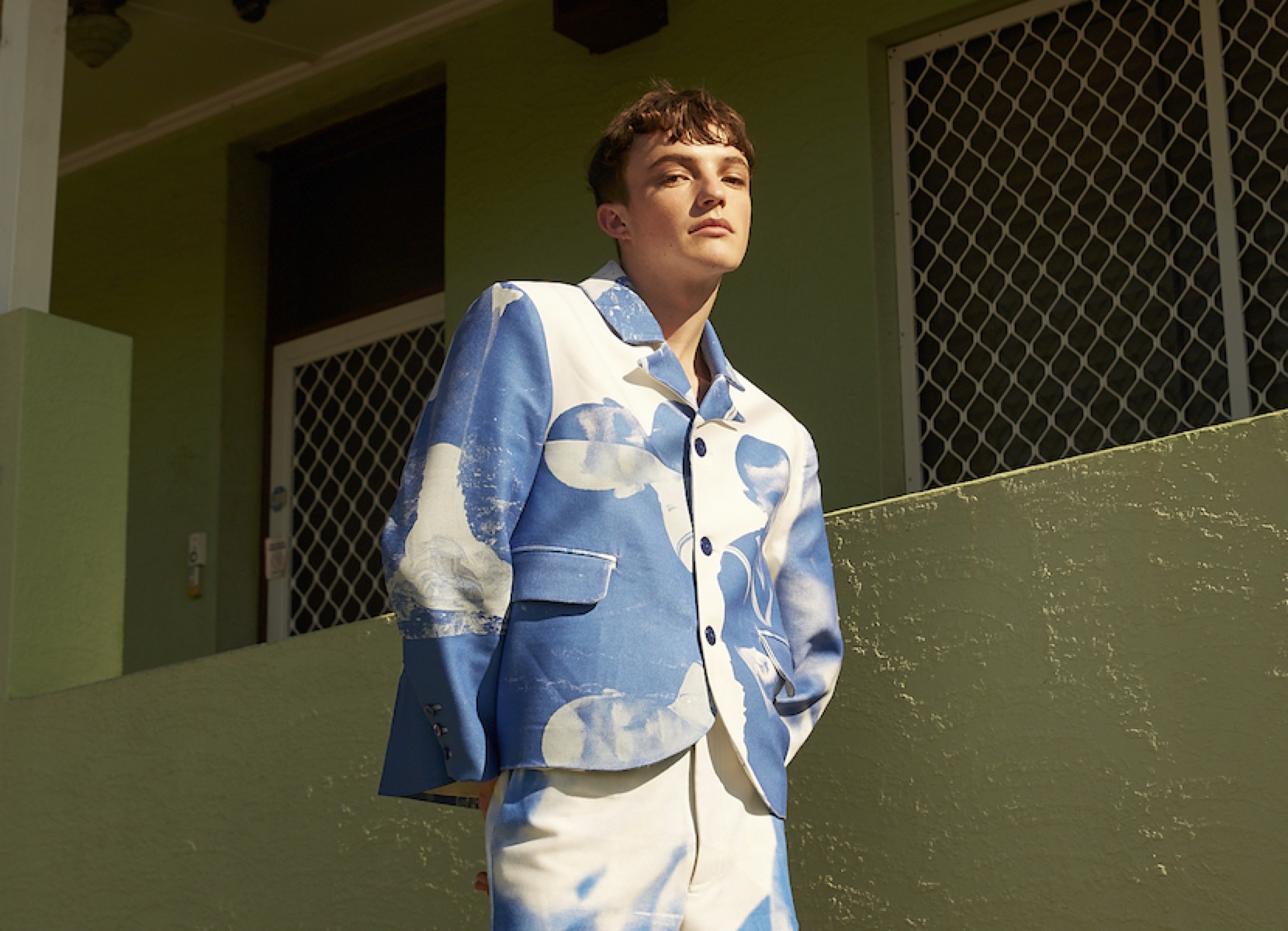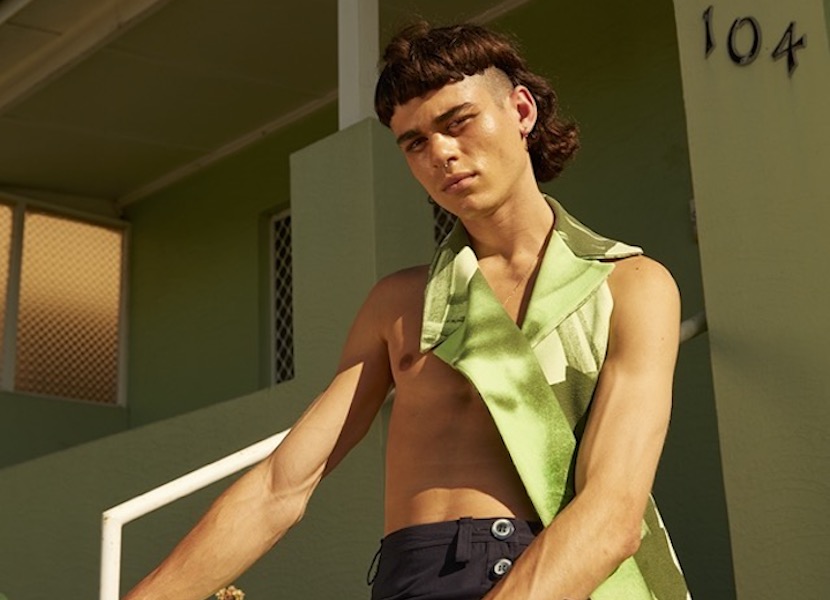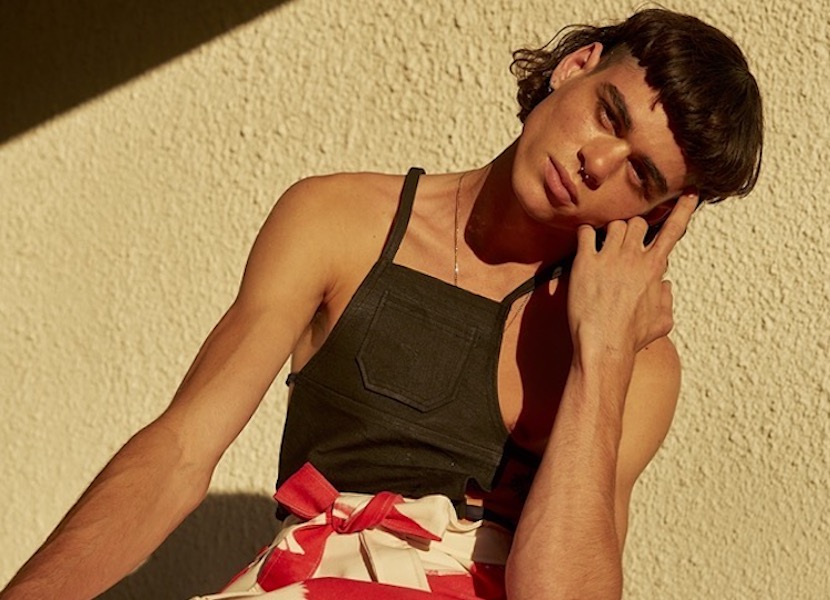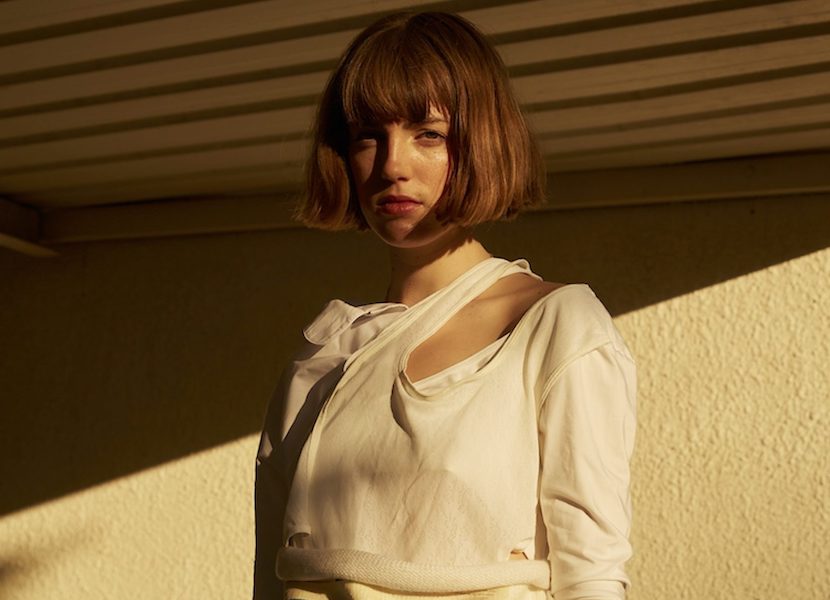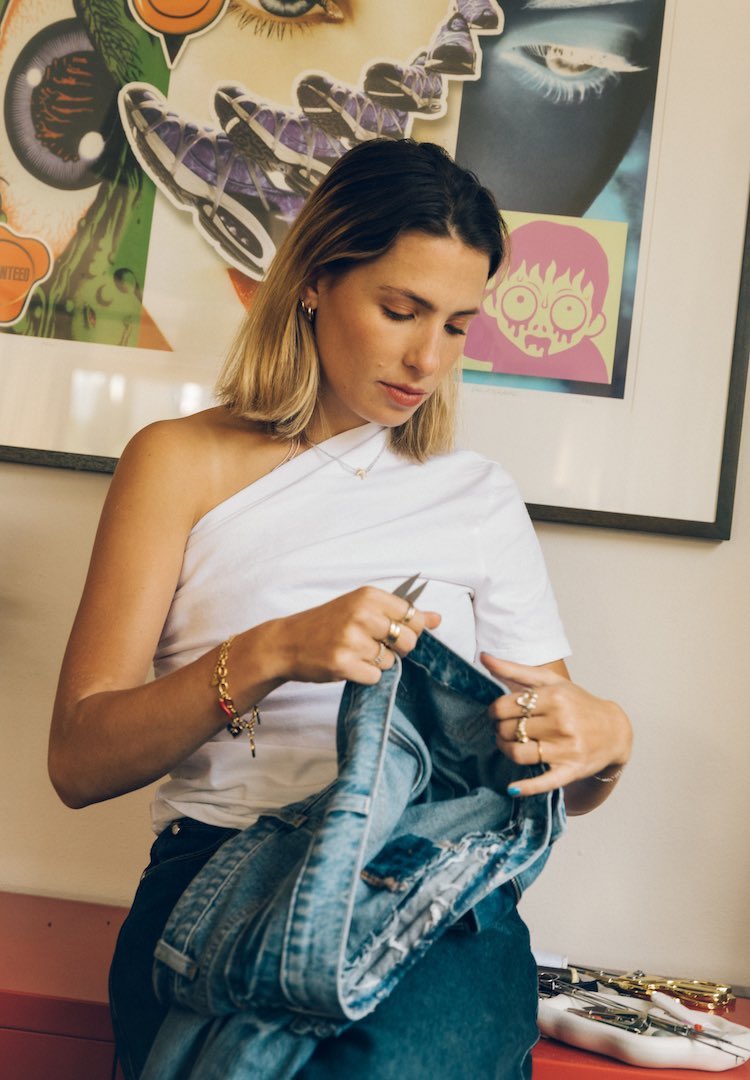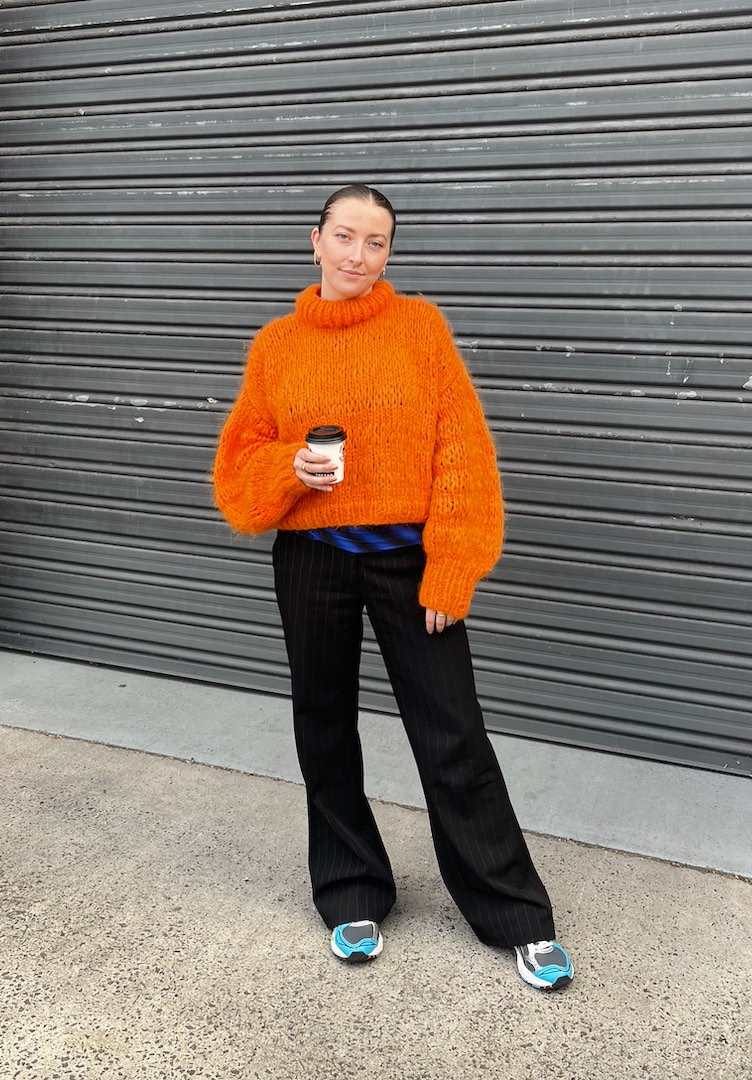Gisella Candi’s boldly coloured graduate collection challenges the traditional gender binary
Photography by Lexi Laphor
Words by Sarah Noonan
“I’m not here to make something pretty or beautiful.”
Gisella Candi’s experimental, rule-breaking National Graduate Showcase collection offers a tantalising glimpse into the future of fashion making.
Based in Sydney with a brand-spanking-new honours degree, Gisella takes inspiration from influential designers of the past and pairs her knowledge of design history with contemporary silhouettes to create something fresh and meaningful.
Looking to procrastinate in a productive way? Subscribe here and we’ll send more great reads straight to your inbox.
Using screen printing as the hero medium of the collection, Gisella has created unique, eccentric prints that are boldly coloured and rich in texture. Challenging the conventions of fashion, Similar_difference seeks to break the definitions of traditional binaries and offer an inclusive, androgynous collection that sparks excitement through the uncanny.
Please introduce yourself to our readers.
Hi, I’m Gisella. I just graduated my honours year from the University of Technology Sydney (UTS). I am now working part-time at a textiles store, enhancing my knowledge of fabrications and how to use them.
Tell us about your collection.
This collection for me was obviously quite a big one. I definitely felt the pressure to communicate what I’m about and who I am and the pressure to deliver a good message within my designs. I wanted to remain quite true to myself because I think it’s important to stay authentic rather than be on-trend.
For this collection, I focused on the idea of deviance. The idea that nothing is ever wrong until another person judges it to be. In terms of how you express your identity, or even how you dress, there’s no right or wrong, there’s only judgement.
When did you know you wanted to get into fashion design?
Fashion was always at the back of my mind, I always loved it, but in high school, we’re never really encouraged to strive for creative careers. All creatives are forced to take the core subjects like English, Maths, and Science in high school, but the academic-focused students aren’t required to take drama or textiles. It took a bit for me to rewire my thoughts and realise what I would be happy doing, and what is going to continually inspire me. I’d rather fail doing something that I really like than fail doing something that I thought was the responsible choice.
How do you describe your design style?
I’m definitely a print-based designer. I love screen printing, I love texture, and I love things that look a bit odd. I always tell people, I’m not here to make something pretty and beautiful, I’d rather make you think and evoke some other emotion. I think that fashion is a way to challenge norms and break what is expected. You can have something to say in fashion, you don’t need to just make something that looks good for the sake of looking good.
View this post on Instagram
What designers inspired you in this sense of communicating a greater meaning?
I’ve always been inspired by Prada in one way or another. I find that there is actually a lot of politics behind the prints and there’s always an underlying meaning in her designs. Even going back to the ’90s, Alexander McQueen’s take on the femme fatale, the strong woman, just showcasing the multiplicity and the different sides to humans and what we’re capable of.
What drew you to screen printing as a predominant medium for your designs?
I hated fabric shopping. So for me, it was easier to buy white fabric and do what I want to it than to go and find the right fabric that represents what I want it to. I had been building up my skills within screen printing for some time and last year I really wanted to prove to people that screen printing can achieve depth and texture. I think people usually associate screen printing with a flat, two-dimensional logo on a t-shirt. Whereas screen printing can fill your whole garment, it can feel three-dimensional and it can be interesting. That is what I wanted to show in my designs.
What were the major points of inspiration for your graduate collection?
I started off with a mood. It was the beginning of lockdown, I was feeling a bit frustrated, a bit angsty. So, I looked into exaggerated forms of that such as delinquency and rebellion, and what underpins this. I defined it as how society often congratulates and embraces passivity and convention rather than passion, creativeness, and authentic expression of the self. I took inspiration from schoolboys and young prisoners and identified this universal struggle to fit in. I then played around with the notion of fitting in and if that is really something to strive for.
I just really wanted to show the weird adolescent blend of tradition versus wanting to explode out of normality.
All of the silhouettes are a bit uncanny, you recognise the items as a blazer or a suit but it doesn’t fit right. Little moments of recognition but represented in a different way that is a bit odd.
Can you explain how your designs have challenged the conventional realm of fashion?
Garments don’t have genders in my opinion. Although clothes can fit differently on different bodies, I think it is important to recognise the binaries while also acknowledging how we can evolve from this. How we can transgress and move forward from what is traditionally expected from ordinary garments was a key element to my designs.
Tell us about the experience of putting together your graduate collection. Were there many challenges?
There were definitely challenges! The majority of the first semester was at home during the lockdown period, which was extremely hard with fashion design being such a tactile practice. And at UTS we are fortunate to have access to machines and resources. We were used to having the best possible environment for our development as designers and lockdown really made us rethink. But it had a positive outcome in that it made us think more sustainably with our use of fabrics as it wasn’t as easy to go out and get more if we made a mistake.
Also, fit sessions with models were limited, we only had two sessions in the year which was hard because at UTS we are required to define our designs as either menswear or womenswear. My collection was technically labelled as menswear, however, it was mostly fitted on me, against my body. So that, in a way, really helped me in exploring gender and personal expression within clothing and fitting on different bodies.
View this post on Instagram
Is sustainability an important aspect of your design process?
The future of fashion definitely needs to be more sustainable and it needs to have more diverse people in power. Sustainability is very important to me as a designer. All my screen printing paste was algae-based, which isn’t traditional. Usually, the pastes used in fast fashion are made from plastic which is horrible for the workers who breathe in these fumes. Traditional pastes aren’t renewable either, it’s horrible for the environment, so it was important for me to use a more sustainable option.
Sustainability within fashion is hard to navigate, it is often falsely marketed, but I’m excited for the next generation of fashion because we are so much more aware of the environment now and we genuinely want to do better.
What’s next for you?
I’ve always wanted to complete my masters overseas, however, the chances of that happening in the current climate of the world is unlikely. But I’m not upset because sometimes taking the path that is least expected can lead to something exciting. Right now, I’m looking for design work in Sydney and continuing to work on my own style and exploring how they can fit into pre-established brands.
Find more of Gisella’s work here.

